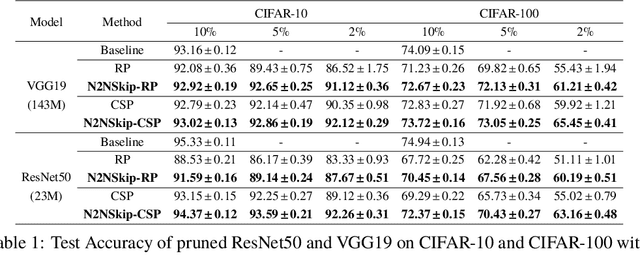Arvind Subramaniam
Duke University
Exploring Hate Speech Detection with HateXplain and BERT
Aug 09, 2022



Abstract:Hate Speech takes many forms to target communities with derogatory comments, and takes humanity a step back in societal progress. HateXplain is a recently published and first dataset to use annotated spans in the form of rationales, along with speech classification categories and targeted communities to make the classification more humanlike, explainable, accurate and less biased. We tune BERT to perform this task in the form of rationales and class prediction, and compare our performance on different metrics spanning across accuracy, explainability and bias. Our novelty is threefold. Firstly, we experiment with the amalgamated rationale class loss with different importance values. Secondly, we experiment extensively with the ground truth attention values for the rationales. With the introduction of conservative and lenient attentions, we compare performance of the model on HateXplain and test our hypothesis. Thirdly, in order to improve the unintended bias in our models, we use masking of the target community words and note the improvement in bias and explainability metrics. Overall, we are successful in achieving model explanability, bias removal and several incremental improvements on the original BERT implementation.
N2NSkip: Learning Highly Sparse Networks using Neuron-to-Neuron Skip Connections
Aug 07, 2022



Abstract:The over-parametrized nature of Deep Neural Networks leads to considerable hindrances during deployment on low-end devices with time and space constraints. Network pruning strategies that sparsify DNNs using iterative prune-train schemes are often computationally expensive. As a result, techniques that prune at initialization, prior to training, have become increasingly popular. In this work, we propose neuron-to-neuron skip connections, which act as sparse weighted skip connections, to enhance the overall connectivity of pruned DNNs. Following a preliminary pruning step, N2NSkip connections are randomly added between individual neurons/channels of the pruned network, while maintaining the overall sparsity of the network. We demonstrate that introducing N2NSkip connections in pruned networks enables significantly superior performance, especially at high sparsity levels, as compared to pruned networks without N2NSkip connections. Additionally, we present a heat diffusion-based connectivity analysis to quantitatively determine the connectivity of the pruned network with respect to the reference network. We evaluate the efficacy of our approach on two different preliminary pruning methods which prune at initialization, and consistently obtain superior performance by exploiting the enhanced connectivity resulting from N2NSkip connections.
Implementation of fast ICA using memristor crossbar arrays for blind image source separations
Aug 07, 2022



Abstract:Independent component analysis is an unsupervised learning approach for computing the independent components (ICs) from the multivariate signals or data matrix. The ICs are evaluated based on the multiplication of the weight matrix with the multivariate data matrix. This study proposes a novel memristor crossbar array for the implementation of both ACY ICA and Fast ICA for blind source separation. The data input was applied in the form of pulse width modulated voltages to the crossbar array and the weight of the implemented neural network is stored in the memristor. The output charges from the memristor columns are used to calculate the weight update, which is executed through the voltages kept higher than the memristor Set/Reset voltages. In order to demonstrate its potential application, the proposed memristor crossbar arrays based fast ICA architecture is employed for image source separation problem. The experimental results demonstrate that the proposed approach is very effective to separate image sources, and also the contrast of the images are improved with an improvement factor in terms of percentage of structural similarity as 67.27% when compared with the software-based implementation of conventional ACY ICA and Fast ICA algorithms.
Pain Intensity Assessment in Sickle Cell Disease patients using Vital Signs during Hospital Visits
Nov 24, 2020


Abstract:Pain in sickle cell disease (SCD) is often associated with increased morbidity, mortality, and high healthcare costs. The standard method for predicting the absence, presence, and intensity of pain has long been self-report. However, medical providers struggle to manage patients based on subjective pain reports correctly and pain medications often lead to further difficulties in patient communication as they may cause sedation and sleepiness. Recent studies have shown that objective physiological measures can predict subjective self-reported pain scores for inpatient visits using machine learning (ML) techniques. In this study, we evaluate the generalizability of ML techniques to data collected from 50 patients over an extended period across three types of hospital visits (i.e., inpatient, outpatient and outpatient evaluation). We compare five classification algorithms for various pain intensity levels at both intra-individual (within each patient) and inter-individual (between patients) level. While all the tested classifiers perform much better than chance, a Decision Tree (DT) model performs best at predicting pain on an 11-point severity scale (from 0-10) with an accuracy of 0.728 at an inter-individual level and 0.653 at an intra-individual level. The accuracy of DT significantly improves to 0.941 on a 2-point rating scale (i.e., no/mild pain: 0-5, severe pain: 6-10) at an intra-individual level. Our experimental results demonstrate that ML techniques can provide an objective and quantitative evaluation of pain intensity levels for all three types of hospital visits.
 Add to Chrome
Add to Chrome Add to Firefox
Add to Firefox Add to Edge
Add to Edge